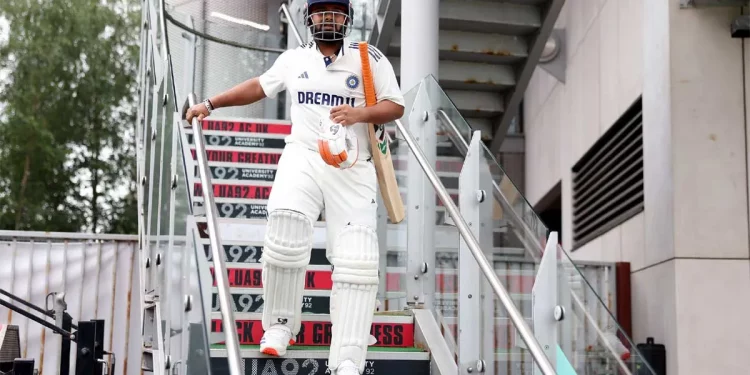On Day 2 of the fourth Test at Old Trafford in Manchester, India’s vice-captain Rishabh Pant once again demonstrated his athletic tenacity by limping out to bat in the opening session. The 27-year-old had to leave the pitch right away after hurting his right foot during the last practice on Day 1. But less than twenty-four hours after the agonising hit, the lucky cricket player headed on the pitch to defend his country.
Shardul Thakur and Ravindra Jadeja, overnight batsmen, were at the crease when India resumed play on Day 2. But in the second over of the day, the latter was out. Before Ben Stokes dismissed the seam-bowling all-rounder for 41, Washington Sundar and Thakur formed a 48-run partnership in the middle.
India lost this wicket for the sixth time in their opening innings. While supporters waited to see who would bat, all eyes turned to the Indian dressing room. The in-form Pant was the one who cautiously approached the centre. From position 37, Pant will resume his innings.
Rishabh Pant is hobbling out to a standing ovation from the Old Trafford crowd! 🤯 pic.twitter.com/I1vZ1MLR16
— Sky Sports Cricket (@SkyCricket) July 24, 2025
The Board of Control for Cricket in India (BCCI) had announced in a statement just minutes before Thakur’s wicket fell that Pant will not be able to keep wickets in the fourth Test because of an injury to his right foot. He will be ready to bat, though, if the club needs him. The top authority also stated that, similar to his performance in the third Test at Lord’s, Dhruv Jurel will be in charge of wicketkeeping.
Is Rishabh Pant going to get a runner?
In 2011, the “runner” rule was abolished in international cricket by the International Cricket Council (ICC). “Runners shall not be permitted” in any situation, according to Section 25.5 of the ICC playing standards.
Rishabh Pant will therefore have to run between the wickets alone and endure the agony. In order to observe if Sundar can score runs from the other end, fans should anticipate that the batter would wait in the middle. The wicketkeeper-batter may free up his arms and try to hit the big strokes if he is given the opportunity to bat with the tailenders.







